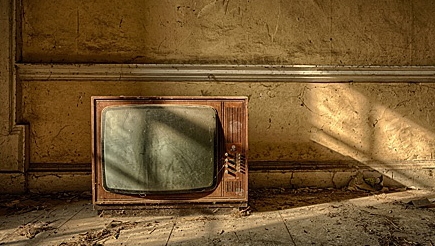
According to the Spanish "Public" daily newspaper website reported on November 16, in November 1969, the most popular British Broadcasting Corporation TV set was the first to use color signals to broadcast programs. Fifty years have passed. Surprisingly, there are still 6,586 families in the UK who are still watching black and white TV.
The person in charge of the television license department responsible for collecting the so-called "television tax" in the United Kingdom called the number "unexpected" and called it a "nostalgia" for black and white television. Although there are still so many people watching black and white TV, people believe that there will be fewer and fewer.
Last year's figure was 575 more than this year, and in 2000 it exceeded 200,000. London is the city with the largest number of families still watching black and white TV, reaching 1311.
The report believes that the reasons may be emotional, or purely to save money. From the data point of view, these 6586 households continue to pay royalties for black and white TV, because this cost is much cheaper than color TV. Black and white TVs pay a tax of €60 a year, compared to €179 for a color TV.
In the UK, Italy and other countries, if you want to watch live TV or record TV, you have to pay this fixed fee, even if you watch it on your computer, tablet, mobile device or any other electronic device. Pay the money. You also want to pay to download programs or watch them directly on the BBC website.
There are only a few exceptions, such as blind people paying only half of the cost, people over the age of 75 are exempt from paying, etc., but these exceptions will be cancelled after the new measures take effect in June 2020. This new measure has also caused great controversy and has become one of the main topics of the current campaign.
For the British, it is natural to pay a fixed fee to watch TV, but this does not mean that they have not begun to question this provision, especially with the rise of streaming media platforms and changes in consumer habits.
The numbers reflect everything: 95% of households today have a “TV license”, but just a few years ago, this percentage was 98%. The ratings also confirm this downward trend: in 2018, the ratings of the major broadcasters such as the BBC, the independent television company and the fourth channel TV station all declined.
This trend is particularly prominent among young people. A recent study showed that more than half (51%) of British young people aged 16 to 24 did not watch any BBC TV channel programs throughout the week.
In order to curb such a fall, the British Minister of Digital, Cultural, Media and Sports Nikki Morgan said that the government does not rule out the option of adopting many opinions that can prevent viewers from losing: replacing it with a subscription service similar to the Netflix model. Current fee service.
Information from the network